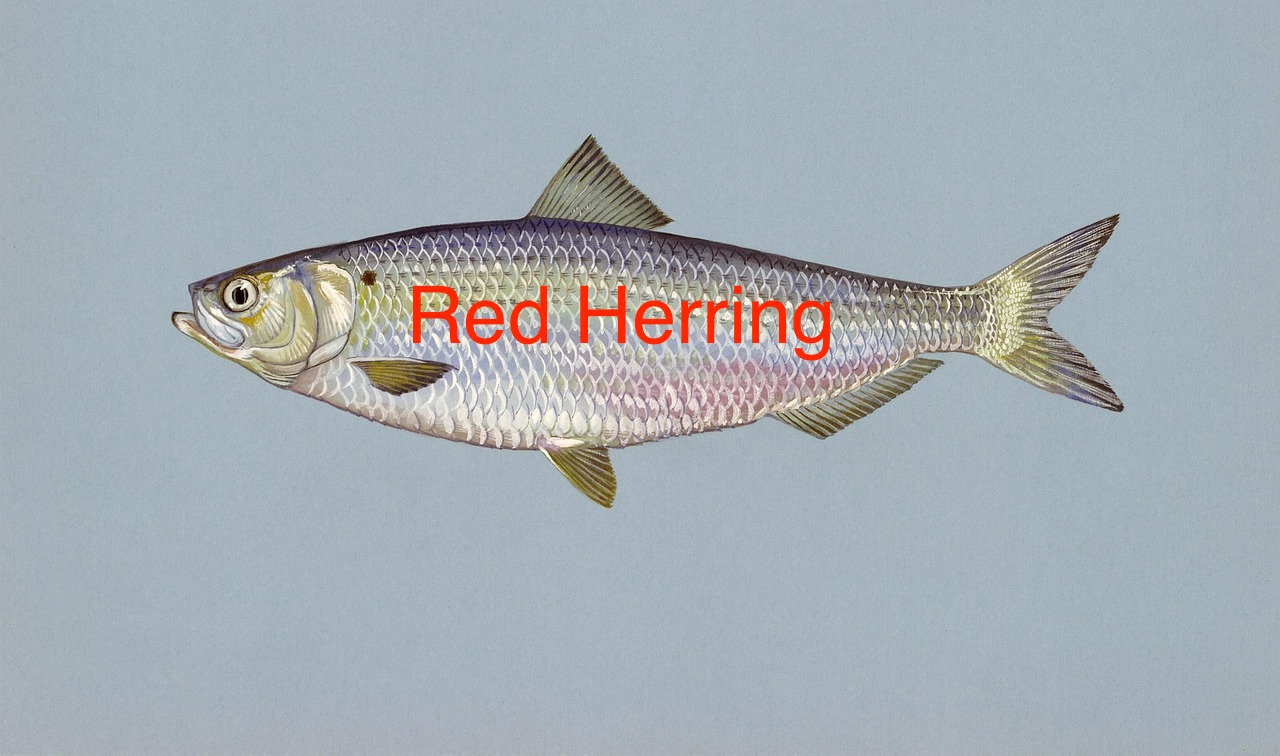


Intuitively, causation seems to require not just a correlation, but a counterfactual dependence. That in turn is challenged by popular interpretations of the concepts of nonlinear systems and the butterfly effect in which small events cause large effects because of, respectively, unpredictability and an unlikely triggering of large amounts of potential energy.Ĭausality construed from counterfactual states
Red herring fallacy 2016 free#
the concept of field), in accordance with known laws of nature.įrom the point of view of thermodynamics, universal properties of causes as compared to effects have been identified through the Second Law of Thermodynamics, confirming the ancient, medieval and Cartesian view that "the cause is greater than the effect" for the particular case of thermodynamic free energy. for instance the concept of impact) or a nonlocal mechanism (cf. To establish a correlation as causal within physics, it is normally understood that the cause and the effect must connect through a local mechanism (cf. Outside the field of philosophy, theories of causation can be identified in classical mechanics, statistical mechanics, quantum mechanics, spacetime theories, biology, social sciences, and law.

Immanuel Kant, according to Beebee, Hitchcock & Menzies (2009), held that "a causal principle according to which every event has a cause, or follows according to a causal law, cannot be established through induction as a purely empirical claim, since it would then lack strict universality, or necessity". In conclusion, he asserted that causality is not based on actual reasoning: only correlation can actually be perceived. David Hume argued that beliefs about causality are based on experience, and experience similarly based on the assumption that the future models the past, which in turn can be based only on experience, which leads to circular logic. Among the more influential theories within philosophy are Aristotle's Four causes and Al-Ghazali's occasionalism. In academia, there are a significant number of theories on causality The Oxford Handbook of Causation ( Beebee, Hitchcock & Menzies 2009) encompasses 770 pages. The nature of causality is systematically investigated in several academic disciplines, including philosophy and physics. Main articles: Causality and Causality (physics) Correlation is often used to infer causation because it is a necessary condition, but it is not a sufficient condition. If there is causation, there is correlation but also a sequence in time from cause to effect, a plausible mechanism, and sometimes common and intermediate causes. That is, "if circumstance p is true, then q follows." In that sense, it is always correct to say "Correlation does not imply causation." Indeed, p implies q has the technical meaning of the material conditional: if p then q symbolized as p → q. However, in logic, the technical use of the word "implies" means "is a sufficient condition for." That is the meaning intended by statisticians when they say causation is not certain. In casual use, the word "implies" loosely means suggests, rather than requires. 4 Use of correlation as scientific evidence.3.4 The relationship between A and B is coincidental.3.3 Bidirectional causation: A causes B, and B causes A.3.2 Third factor C (the common-causal variable) causes both A and B.



 0 kommentar(er)
0 kommentar(er)
